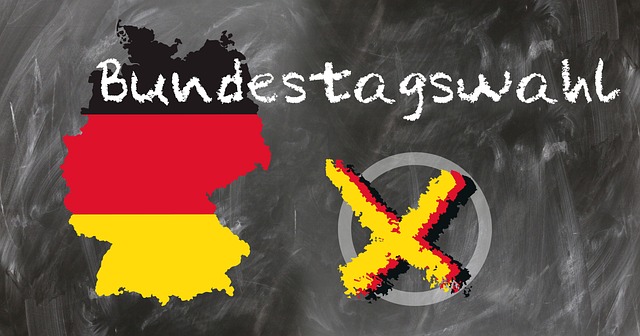Select DOT Compliance is crucial for trucking safety and efficiency, involving understanding specific rules, training, record-keeping, inspections, and technology. Businesses in shipping and logistics must navigate complex regulations to avoid mistakes, penalties, and foster a culture of safety. Staying current with updates and trends through digital tools and resources is essential for effective compliance.
“Unraveling the complexities of Department of Transportation (DOT) regulations is essential for businesses navigating the logistics industry. This comprehensive guide aims to demystify DOT rules, offering a clear path to compliance. We’ll explore key topics like understanding basic DOT requirements, implementing effective select DOT compliance strategies, and avoiding common pitfalls.
Additionally, we delve into industry-specific regulations, uncover technology’s role in enhancing compliance, and provide insights on staying ahead of evolving trends, ensuring your business remains DOT-compliant.”
- Understanding DOT Regulations: Basics Unveiled
- Select DOT Compliance: Key Steps for Businesses
- Common Mistakes to Avoid in DOT Adherence
- Industry-Specific Rules: A Comprehensive Look
- Technology's Role in Enhancing DOT Compliance
- Staying Updated: Changes and Future Trends
Understanding DOT Regulations: Basics Unveiled

Understanding DOT Regulations: Basics Unveiled
The Department of Transportation (DOT) sets and enforces safety regulations to ensure the smooth operation of the trucking industry. These regulations cover a wide range, from vehicle maintenance and driver conduct to hazardous material handling and logging. For companies operating within this realm, achieving and maintaining DOT compliance is not just a legal requirement but also a cornerstone of responsible business practices. By adhering to these standards, carriers can mitigate risks, prevent accidents, and foster a culture of safety throughout their operations.
Select DOT Compliance involves a multifaceted approach. It begins with understanding the specific rules that apply to your business, based on factors like vehicle type, cargo being transported, and driver roles. Regular training for employees, especially drivers, is paramount in how to stay DOT compliant. This includes keeping detailed records, properly inspecting vehicles before each trip, adhering to strict rest and work hour limits, and ensuring all required safety equipment is up-to-date and functional. Companies should also implement robust internal systems to track compliance, conduct regular audits, and promptly address any non-compliance issues that arise.
Select DOT Compliance: Key Steps for Businesses

When it comes to Select DOT Compliance, businesses must navigate a complex landscape of regulations designed to ensure safe and secure transportation. The process starts with understanding which rules apply to your specific operations, whether you’re in the shipping and logistics compliance or managing a fleet of vehicles.
Key steps for achieving Select DOT Compliance include conducting a thorough assessment of your company’s activities, identifying relevant cargo security and safety protocols, and equipping your team with the knowledge and tools they need to adhere to these standards. Integrating fleet management software solutions can streamline this process by providing real-time data, simplifying documentation, and enhancing overall efficiency in maintaining compliance across all aspects of your operations.
Common Mistakes to Avoid in DOT Adherence

Many businesses, especially those involved in international trade, often find themselves navigating a complex web of DOT (Department of Transportation) regulations. While the intent behind these regulations is to ensure safety and compliance, common mistakes can lead to costly consequences and legal issues. One of the primary blunders companies make is failing to understand that DOT adherence goes beyond just meeting minimum standards. It involves a comprehensive approach to record-keeping, which includes maintaining detailed logs of all transportation activities. This meticulous documentation is crucial for tracking shipments, driver hours, and vehicle maintenance, among other critical data points.
Another frequent oversight is inadequate training, particularly when it comes to international trade compliance. Employers should invest in comprehensive training programs that educate staff on not only the basic DOT record-keeping standards but also specialized areas like accident investigation procedures. By embracing proactive measures and ensuring all employees are well-versed in relevant regulations, businesses can mitigate risks effectively. Moreover, staying updated with industry trends and regulatory changes through dedicated international trade compliance training is essential to avoid pitfalls that could hinder smooth operations.
Industry-Specific Rules: A Comprehensive Look

In the realm of transportation, the Department of Transportation (DOT) regulations serve as a comprehensive framework to ensure safety and efficiency across various industry sectors. One of the key aspects that sets DOT apart is its tailored approach to different modes of transport, recognizing the unique challenges each sector faces. This includes specific rules for trucking operations, reflecting the critical role trucks play in the logistics chain while demanding meticulous adherence to safety standards. For instance, driver performance monitoring systems are mandated to track and maintain safe driving habits, enhancing overall fleet safety.
Select DOT Compliance is not merely about ticking boxes; it involves a deep understanding of industry-specific requirements. This is where specialized services like dot compliance consulting come into play. Such consulting firms offer expert guidance tailored to the nuances of trucking operations, including comprehensive safety training for truck drivers. By leveraging their knowledge and resources, businesses can navigate these regulations effectively, ensuring ongoing DOT compliance and fostering a culture of safety within their trucking fleets.
Technology's Role in Enhancing DOT Compliance

In today’s digital era, technology plays a pivotal role in enhancing Select DOT Compliance. Advanced software solutions and online platforms are designed to streamline processes related to shipping and transportation, ensuring that businesses adhere to Department of Transportation (DOT) regulations. These tools enable real-time tracking of shipments, automated documentation, and efficient data management, thereby reducing the risk of costly dot violations and penalties. By leveraging technology, companies can improve their international trade compliance training and stay updated with the latest safety standards.
Transportation safety training programs have also been revolutionized through digital means. E-learning modules and interactive simulations offer comprehensive training experiences, equipping employees with the knowledge to handle diverse scenarios safely and responsibly. This not only enhances overall DOT compliance but also fosters a culture of continuous improvement within organizations, aiming to minimize errors and promote best practices in transportation operations.
Staying Updated: Changes and Future Trends

Staying current with changes and anticipating future trends is crucial for anyone involved in select DOT compliance. The Department of Transportation (DOT) regularly updates its regulations to adapt to evolving industry standards, safety concerns, and technological advancements. Shippers and carriers who neglect these updates risk non-compliance, leading to penalties and legal issues. By staying informed, they can ensure their operations remain safe, efficient, and up-to-date with the law.
To facilitate this, various resources are available, including DOT publications, industry newsletters, and online forums. Regularly reviewing these sources allows professionals to implement effective dot compliance tips for shippers and regulatory compliance for carriers. Additionally, preparing for potential changes can mitigate risks during dot compliance audits, ensuring the organization is always one step ahead.
In navigating the complex landscape of DOT regulations, understanding and adhering to these guidelines is essential for businesses operating in regulated industries. By familiarizing themselves with the basics, implementing key steps for Select DOT compliance, and staying abreast of industry-specific rules and technological advancements, companies can ensure they meet their obligations effectively. Avoiding common pitfalls and embracing change will foster a robust and compliant environment, ultimately contributing to success in today’s digital era.
